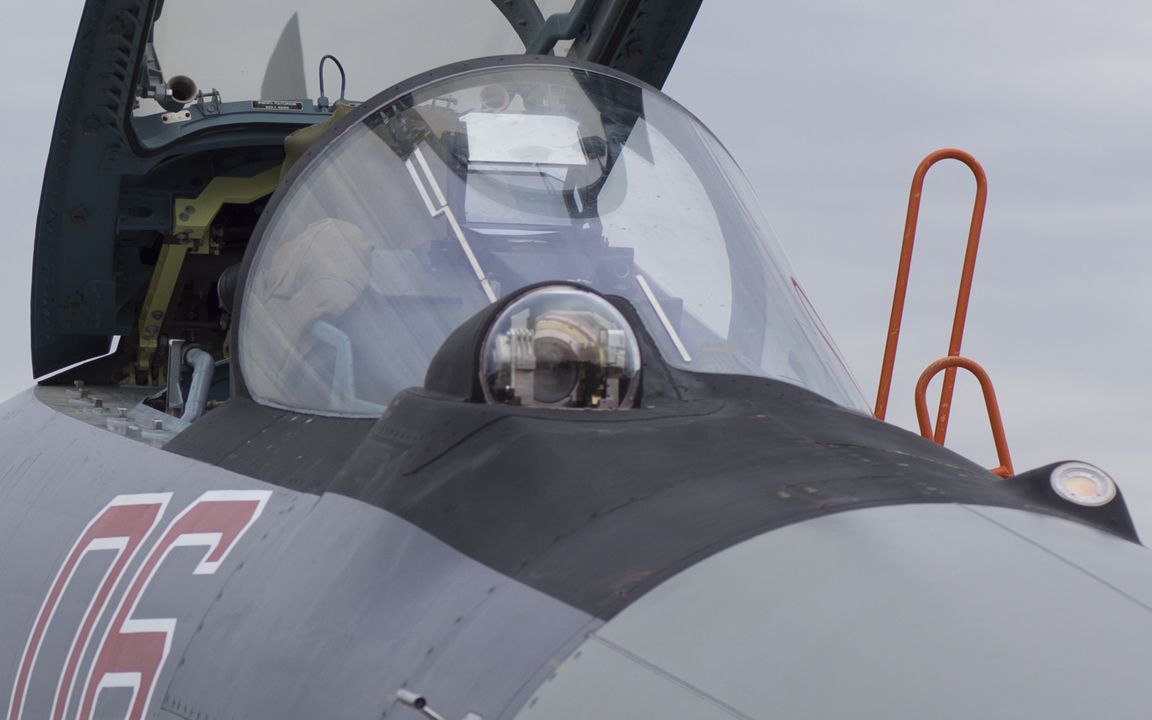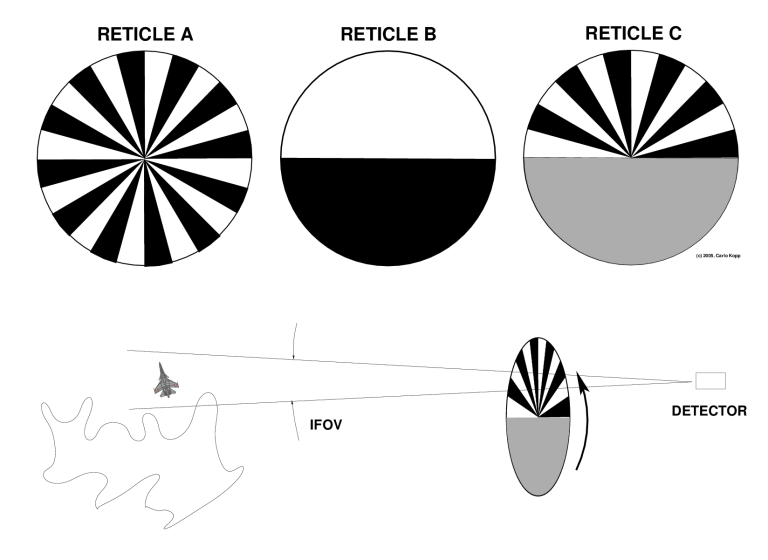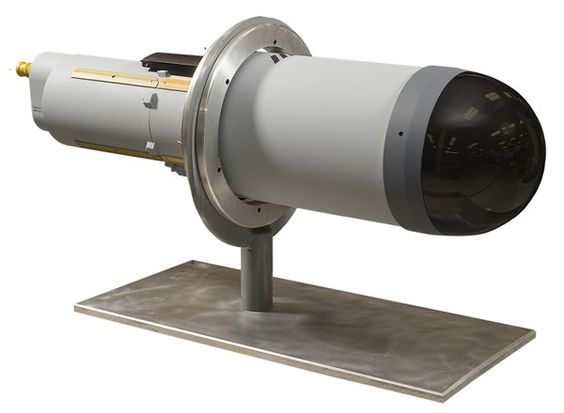|
The IRST ( infrared search and track) is a device used to detect targets. The IRST pics uo heat signals from a target. Heat is transferred in three modes, namely conduction, convection and radiation. The heat getting transferred via radiation to the surrounding us picked up by the IRST sensor. For ex. The F 22 Raptor when flying at it's normal cruising speeds emit hot gases from it's engine of the tempreture around 800° C. This much heat is enough to detect Raptor and engage it with a heat seeking missile. There are a large number of Four plus generation aircrafts that have IRST devices. QWIP IRST is the latest. QWIP IRST QWIP is the latest advancement in IRST. Modern QWIP IRST can detect stealth aircraft from ranges upwards of 80 kilometers, even from front. Such sensors are already mounted on aircraft such as Euro fighter Typhoon, Dassault Rafale, T 50, and possibly J-20 and J-10. A Quantum Well Infrared Photo detector (photo detectors are sensors they can detect light/electromagnetic waves). Which uses electronic inter sub bands transitions in quantum wells (A quantum well is a trap which hold energy & that energy is unable to convert into another forms of energy) to absorb photons. The basic elements of a QWIP are quantum wells which separated by barriers. The quantum well are designed to have one confined state inside the well & first excited state which aligns with the top of the barrier the ground state is filled with electrons (N-doping). The barriers between quantum wells are thick enough to avoid quantum tunneling (passing of sub atomic particles through layers of atoms). When the QWIP is illuminated with light (photons) of same or higher energy as the inter sub band transition energy an electron is excited & the excited electron can escape into the continuum & be measured as a photo current. To externally measure a photo current (electric current produced by electromagnetic radiation in the photoelectric effect). To externally measure a photo current the electrons need to be extracted by applying an electric field to the quantum wells. The QWIP photo detector /IRST can measure how much light comes from various sources by measuring the current. The longer the wave length of light the less energy the light has to give the electrons. One thing to take care of the QWIP is the detector must be cooled to avoid excessive thermal excitations otherwise the performance is degraded cooling up to ~65K is common. Argon like compressed gases is commonly used for cooling. C - QWIP – Corrugated QWIP is another area of research in IR detectors Another kind of IRST is QDIP IRST (Quantum Dot InfraRed Photo detector). In general, QDIPs are similar to QWIPs but with the quantum wells replaced by quantum dots, which have size confinement in all spatial directions
IR SEEKER The infrared sensor package on the tip or head of a heat-seeking missile is known as the seeker head. There are three main types of IR seekers: spin-scan, conical-scan, and imaging. The simplest of these is the spin-scan seeker with amplitude modulation tracking. It consists of four basic components: the optics, the reticle, the sensor element and assorted filters. Energy emitted by the target (source) is focused by optics and passed through a spinning reticle, producing a modulated (pulsed) signal that impinges on the sensor element. Output from the sensor is fed through various filters, where the signal is conditioned by removing information regarding extended sources (e.g. clouds), the frequency of the spinning reticle, etc. The resulting output signal is the tracking error in the form of a sine wave. The amplitude and phase of this wave corresponds to the magnitude and direction of the tracking error, which is subsequently fed to the guidance subsystem Conical-scan (con-scan) seekers function similarly to spin-scan seekers, but are somewhat more advanced. Con-scan seekers focus gathered energy through the outer edge of a stationary reticle to the IR sensor via a secondary spinning mirror. This mirror is tilted with respect to its rotational axis. The sensor outputs a frequency modulated sine wave which is first fed through a frequency discriminator before passing through various filters to produce the tracking error. The third main type of seeker is the imaging seeker. This is the most advanced seeker, and uses an array of sensor elements called a focal plane array instead of a single reticle. The IR seeker detects the thermal radiation, that is, the electromagnetic radiation emitted by an object based solely on its temperature. The “thermal” region of the electromagnetic radiation spectrum is generally considered to extend from the short wave ultraviolet to the long range IR. From the detector array output, a spatial map of the scene is built and passed to processing software. Image recognition algorithms are used to examine the data & determine the location of the target within the image. These processes are highly efficient to resist the counter measures & also allow the missile to guide itself into particular parts of the target. Due to sophisticated software, imaging seekers can readily distinguish between aircraft, clouds, birds, flares, etc. and are not easily fooled by CM. These seekers are also less likely to be fooled into locking onto the sun using the advanced image processing techniques the target shape can be used to find its most vulnerable part toward which the missile is then steered Most IR guided missiles have their seekers mounted on a gimbal. This allows the sensor to be pointed at the target even if the missile is pointed to some other directions. So the missile cannot always be pointed at the targets. Rather the pilot or operator can points the seeker at the target using radar, HMD, optical sight or possibly by pointing the nose of the aircraft or missile launcher directly at the targets. Once the seeker sees & recognizes the target, it indicates to the pilot then the pilot “un cages” the seeker (which is allowed to follow the target). After this the seeker remains locked on the target. Modern missiles use gimbal + proportional guidance to fly in an efficient intercept path The sensor element in a typical IR seeker is generally sensitive only to select radiation band-widths. For example, lead sulfide (PbS) detector elements are sensitive to the 2-3 micrometer range, designated α−band, and lead selenide (PbSe) detector elements are sensitive to the 3-5 micrometer range, designated β−band.Each band corresponds to a temperature range which can be quantified using Wien’s displacement law (Wien’s law states that the wavelength of peak energy emission of a blackbody is inversely proportional to its absolute temperature in K) Seekers which only track 3-5 micrometer are called single color seekers they are vulnerable to counter measures this lead to the development of new seekers 8-13 micrometer wavelength range which is less absorbed by atmosphere & can lock on to fuselage these are commonly called all aspect seekers. Now a day’s most of the seekers combines several detectors & are called two color systems. To know more applications of IRST click on the buttons below. Thanks For Reading ! Leave a Reply. |
AuthorPalash Choudhari Archives
June 2021
Categories
All
|
||||||



 RSS Feed
RSS Feed
